I doubt you’ll meet a person who goes to Israel without seeing Jerusalem. It’s the most important city in history, and it offers so much to see. But often, it’s seen only from this view.
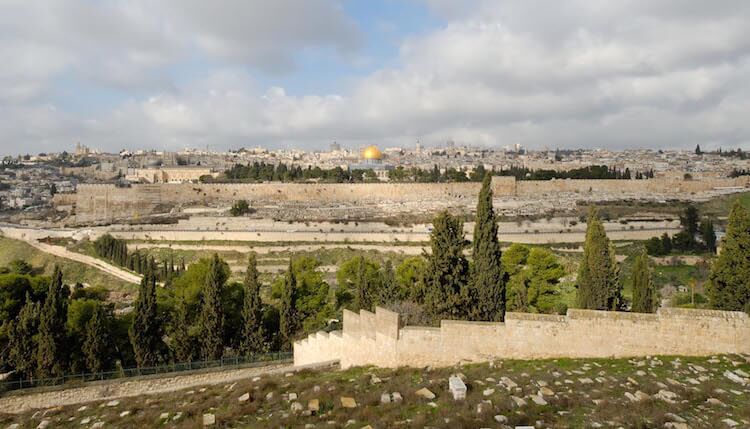
(Photo: Jerusalem from the east. Courtesy of the Pictorial Library of Bible Lands)
There are many great views of Jerusalem. Like looking at the various facets of a diamond, each direction offers a different perspective on the same city.
Here are 4 views of Jerusalem every visitor should see—from the north, south, east, and west.
Good news: 3 of the views are free.
From the North: Mount Scopus (Biblical Nob)
A marvelous lookout from Mount Scopus on the campus on Hebrew University allows visitors a view of the Old City from the northeast. Many groups stop here after entering Jerusalem from Jericho.
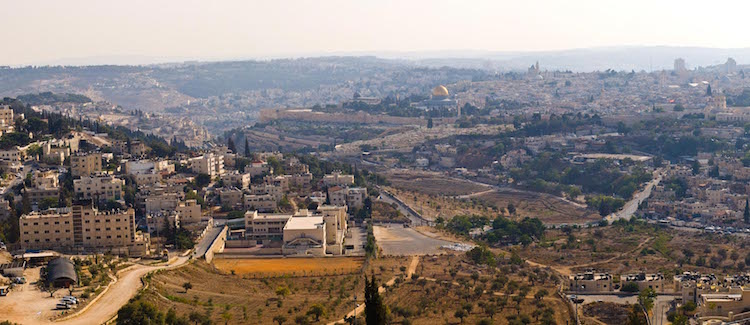
(Photo: Jerusalem panorama from Mount Scopus. Courtesy of the Pictorial Library of Bible Lands)
Mount Scopus corresponds with the biblical city of Nob, which served as a city of priests in King Saul’s day.
- Here Doeg the Edomite slaughtered all the priests but one—who escaped and fled to David (1 Samuel 22:19-23).
- During the reign of Hezekiah, Nob was where the Assyrian king halted and shook “his fist” at Jerusalem after the Angel of the Lord destroyed his army (Isaiah 10:18, 32; 36:36-37).
- Although Sennacherib had decimated much of Israel and Judah in his rampage, the most he could boast over Jerusalem in his infamous prism was that his siege imprisoned Hezekiah “like a bird in a cage.”
From the slopes of Mount Scopus after the Six-Day War in 1967, the Israel Philharmonic Orchestra gave a concert to celebrate the newly reunified Jerusalem.
From the South: Haas Promenade
Named after Daniel Haas, a fallen soldier from the first Lebanon war, the Haas Promenade offers the best view of Jerusalem from the south. A lovely garden with terraced walkways and benches provide visitors a casual atmosphere.
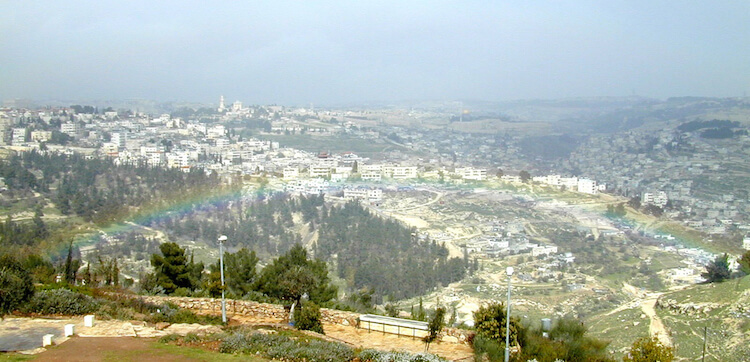
(Photo: Jerusalem rainbow from Haas Promenade, tb021501203. Courtesy of the Pictorial Library of Bible Lands)
Tradition states that the Sanhedrin met on this hill to conspire to turn Jesus over to Roman officials; hence the hill bears the name, “Hill of Evil Counsel.”
Ironically, the hill also hosted the headquarters of the British Mandate and more recently, the United Nations building.
From the East: Mount of Olives
This is the iconic view of the Old City because it shows so many locations at once. The best view from the east is from the Mount of Olives at or just below the parking lot of the Seven Arches Hotel.
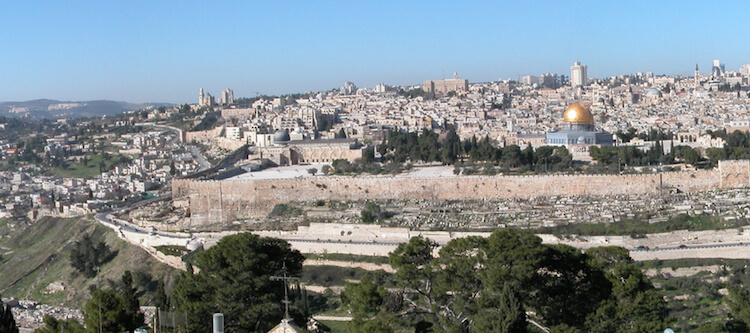
(Photo: Jerusalem from Mount of Olives panorama. Courtesy of the Pictorial Library of Bible Lands)
This view from allows you to see the Temple Mount, the Old City, the Kidron Valley, and the City of David from the vantage that Jesus saw them in His day.
The Mount of Olives served as the place of a number of key events in Jesus’ life:
- His Triumphal Entry
- His arrest and betrayal at the Garden of Gethsemane
- The Olivet Discourse
- His Ascension
From the West: The Phasael Tower in the David Citadel
A great view of the Old City from the west is from atop Phasael Tower in the Citadel. (Another cheaper option might be from the roof of the nearby Petra Youth Hostel.)
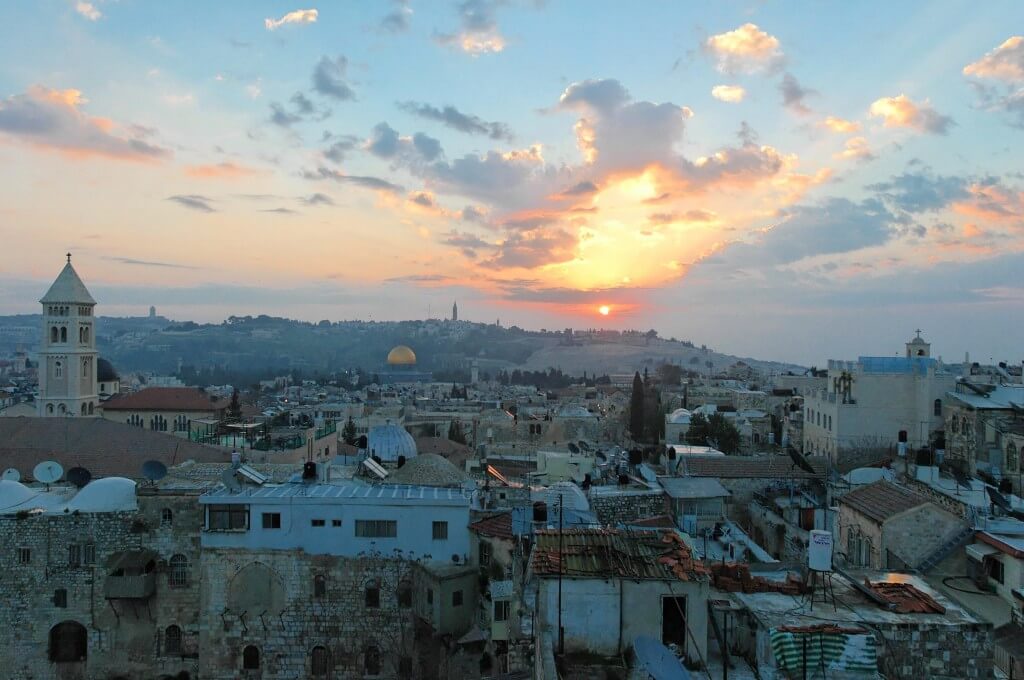
(Photo: Sunrise over Jerusalem from the west. Courtesy of the Pictorial Library of Bible Lands)
Part of Herod the Great’s original Praetorium, the Citadel had three towers that he named after his wife Miriam, his friend Hippicus, and his brother Phasael.
- Only the Phasael Tower still stands, with additions from the Mamluk period.
- Couples often get engaged on the tower. In fact, one travel guide designates the museum as one of the most romantic places in the world. (I don’t get it.)
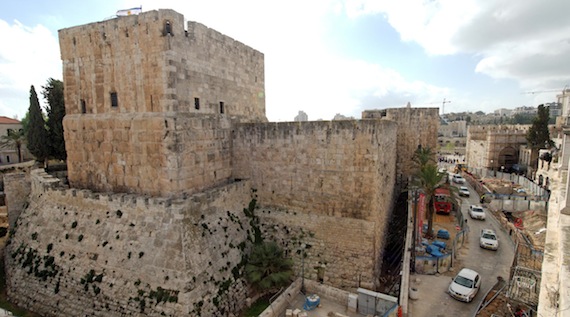
(Photo: Phasael Tower, David Citadel. Courtesy of the Pictorial Library of Bible Lands)
My wife and I stood atop the Phasael Tower one afternoon and enjoyed reading the events of the Passion Week as recorded in the gospels.
- Most of the events’ locations we could find in the contours of the city that stretched below us in broad panorama.
- It was especially meaningful to know that Pilate tried Jesus in the Citadel itself before condemning Him to crucifixion at the nearby site of the present Church of the Holy Sepulcher.
Well, there you have it. Great views from the north, south, east, and west.
Tell me what you think: Do you have a favorite view of Jerusalem? To leave a comment, just click here.
